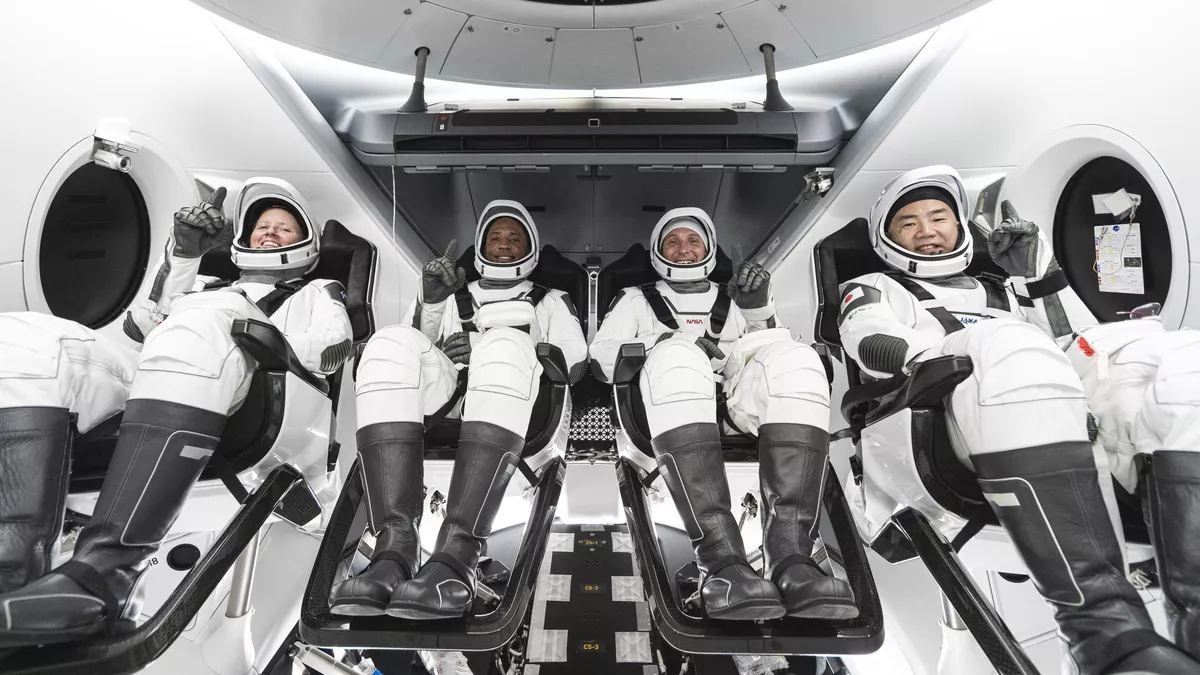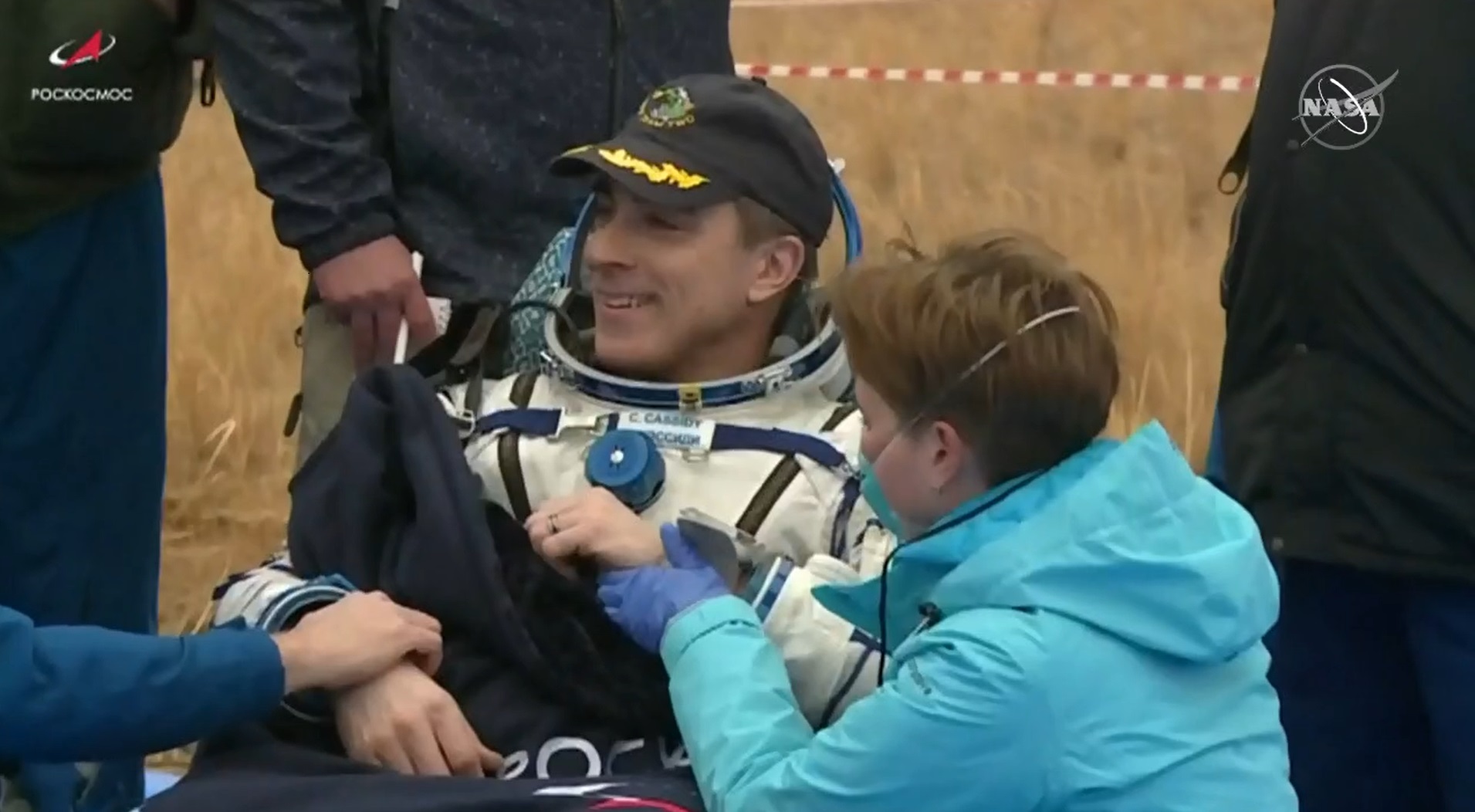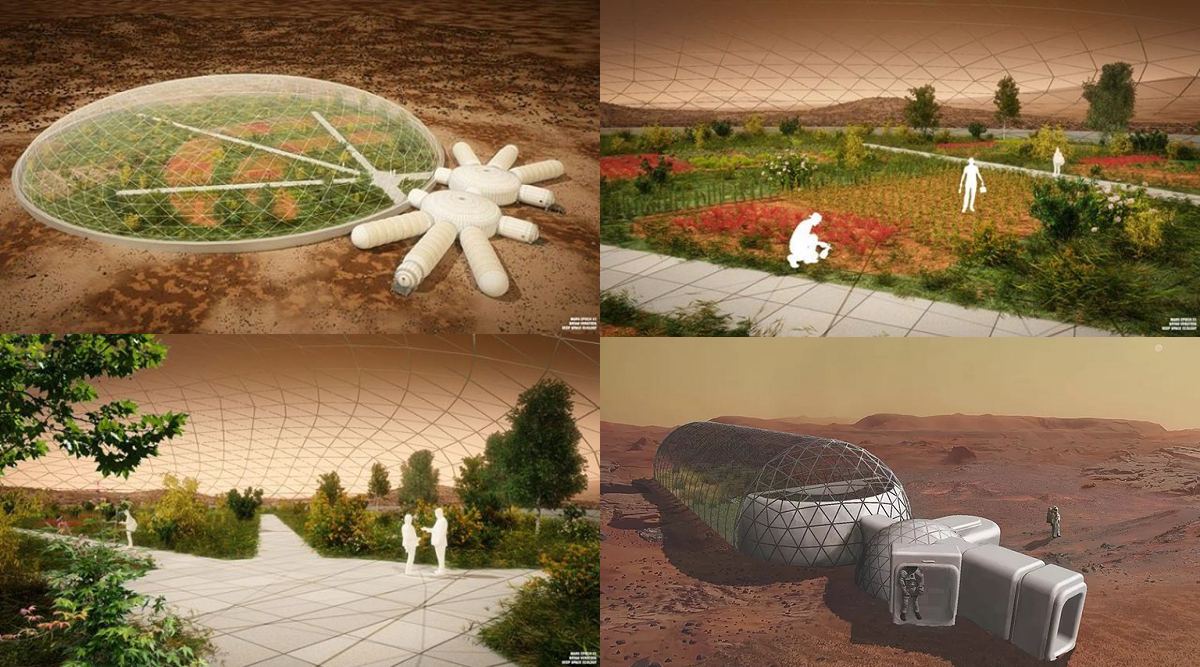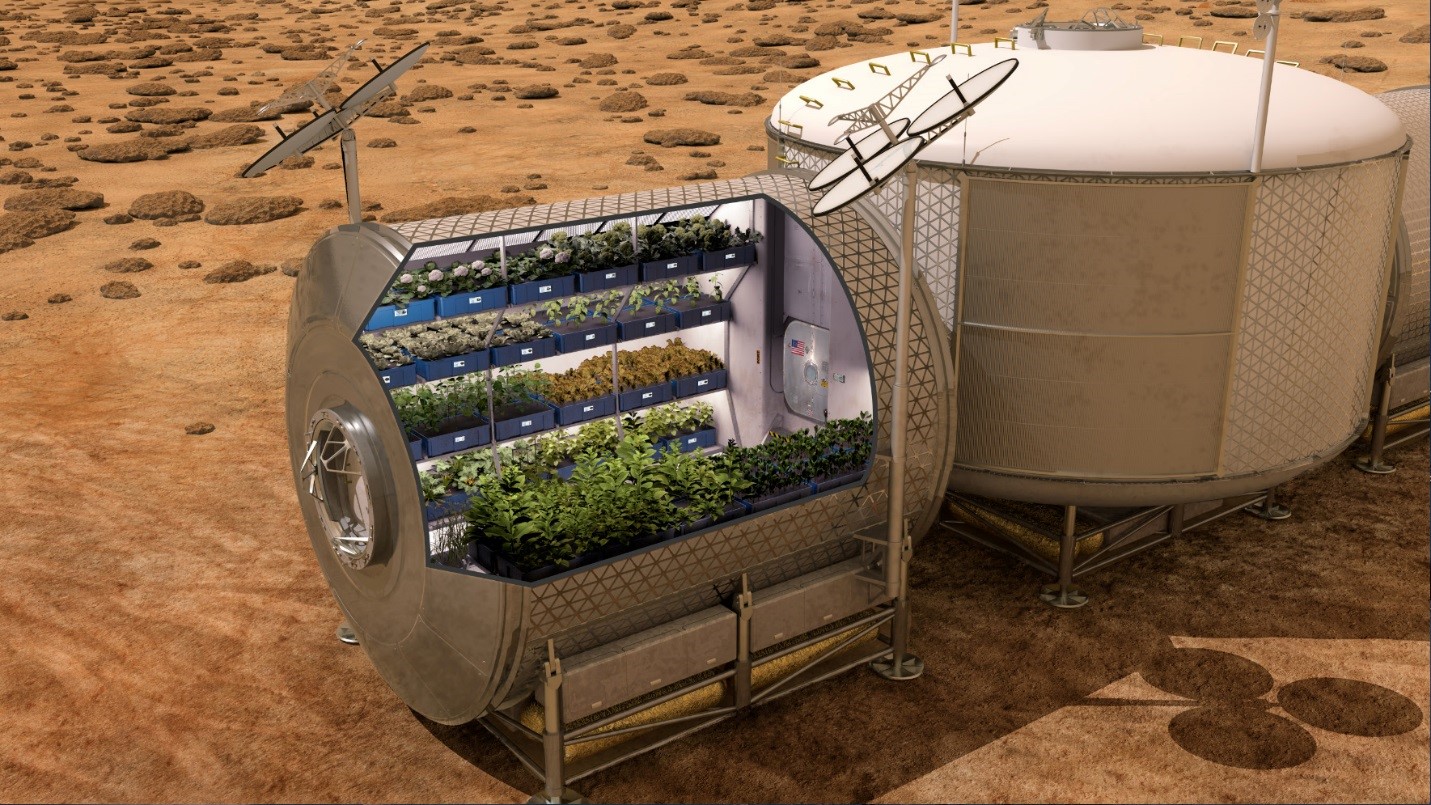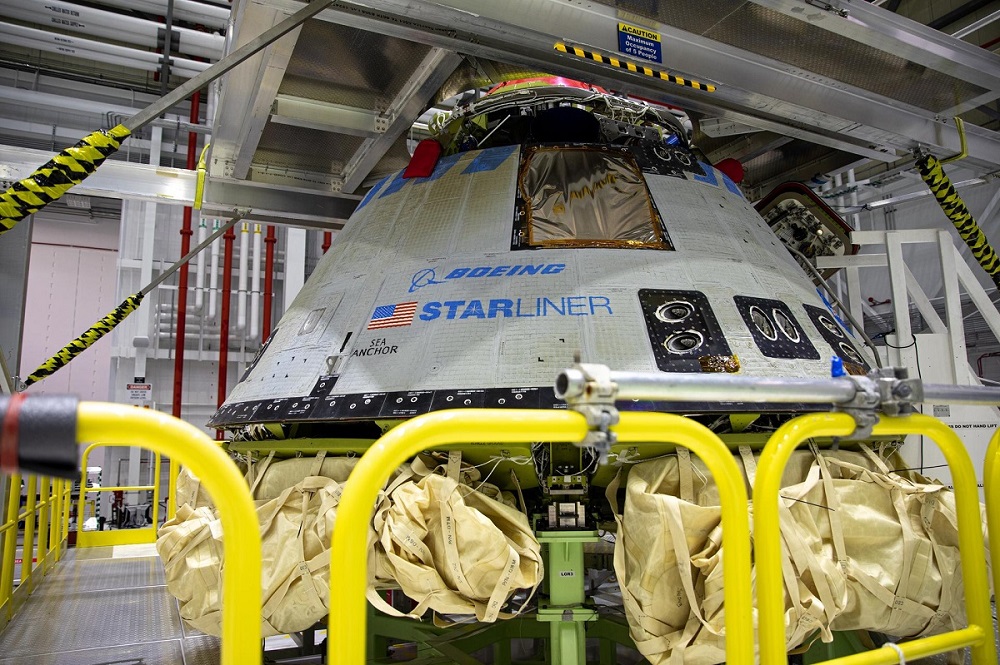One of the biggest threats to the International Space Station (ISS) comes from micrometeoroid impacts. A small hole in the wrong place can throw the resident astronauts into a life threatening situation. Currently, there is no active program to monitor these types of impacts, though scientists think they must be common given the ubiquity of small objects in the ISS’s orbit. An interdisciplinary team from MIT hopes to provide some data to support that theory by using an extremely unusual impact sensor made almost entirely out of fabric.
Continue reading “There’s Fabric on the Space Station That Scientists Are Using to “Listen” for Space Dust Impacts”Earth’s toughest bacteria can survive unprotected in space for at least a year
A remarkable microbe named Deinococcus radiodurans (the name comes from the Greek deinos meaning terrible, kokkos meaning grain or berry, radius meaning radiation, and durare meaning surviving or withstanding) has survived a full year in the harsh environment of outer space aboard (but NOT inside) the International Space Station. This plucky prokaryote is affectionately known by fans as Conan the Bacterium, as seen in this classic 1990s NASA article.
The JAXA (Japanese Aerospace Exploration Agency) ISS module Kib? has an unusual feature for spacecraft, a front porch! This exterior portion of the space station is fitted with robotic equipment to complete various experiments in outer space’s brutal conditions. One of these experiments was to expose cells of D. radiodurans for a year and then test the cells to see if they not only would survive but could reproduce effectively afterward. D. radiodurans proved to be up to the challenge, and what a challenge it was!
Continue reading “Earth’s toughest bacteria can survive unprotected in space for at least a year”SpaceX’s Resilience Spacecraft has Lifted Off and is Headed for the ISS!
Earlier this evening (Sunday, November 15th, 2020), NASA and SpaceX achieved another historical milestone. Six months after successfully sending astronauts Robert Behnken and Douglas Hurley to the ISS with the Demo-2 mission, the US demonstrated the restoration of domestic launch capability by sending the fully-crewed Crew Dragon spacecraft (Resilience) on an operational mission to the ISS.
Continue reading “SpaceX’s Resilience Spacecraft has Lifted Off and is Headed for the ISS!”ISS Crew Return Safely to Earth
On the evening of Wednesday, Oct. 21st, the crew of Expedition 63 finally returned to Earth after spending 196 days in space. It all began when NASA astronaut Chris Cassidy (commander) and Russian cosmonauts Ivan Vagner and Anatoly Ivanishin (both flight engineers) departed the International Space Station (ISS) aboard their Soyuz spacecraft at 07:32 PM EDT (04:32 PM PDT) and landed in Kazakhstan by 10:54 PM EDT (07:54 PM PDT).
Continue reading “ISS Crew Return Safely to Earth”What Martian Settlers Need to Know About Soil Can Teach us How to Grow Better on Earth
When human beings start living in space for extended periods of time they will need to be as self-sufficient as possible. The same holds true for settlements built on the Moon, on Mars, and other bodies in the Solar System. To avoid being entirely dependent on resupply missions from Earth (which is costly and time-consuming) the inhabitants will need to harvest resources locally – aka. In-Situ Resource Utilization (ISRU).
This means they’ll have to procure their own sources of water, building materials, and grow their own food. While the ISS has allowed for all kinds of experiments involving hydroponics in space, little has been done to see how soil fares in microgravity (or lower gravity). To address this, Morgan Irons – Chief Science Officer of the Virginia-based startup Deep Space Ecology (DSE) – recently sent her Soil Health in Space experiment to the ISS.
Continue reading “What Martian Settlers Need to Know About Soil Can Teach us How to Grow Better on Earth”The Air Leak on the International Space Station is Worse Than Previously Believed
On Tuesday, Sept. 29th, the Russian State Space Corporation (Roscosmos) announced that astronauts aboard the International Space Station (ISS) had found the source of a suspected leak. The crew of Expedition 63 – NASA astronaut and Commander Chris Cassidy and Russian cosmonauts Anatoly Ivanishin and Ivan Vagner – had been searching for this leak since August, and determined that it was “beyond expected levels.”
Roscosmos also said in a statement that “it was established that the spot is located in the Zvezda (star) service module, which contains scientific equipment.” They also emphasized that the leak “is not dangerous for the life and health of the ISS crew and does not prevent the ISS continuing manned flight.” Nevertheless, the amount of atmosphere lost may require additional oxygen to be pumped into the station.
Continue reading “The Air Leak on the International Space Station is Worse Than Previously Believed”Astronauts Come Back to Earth on August 2nd, Completing the Full Crew Dragon Test
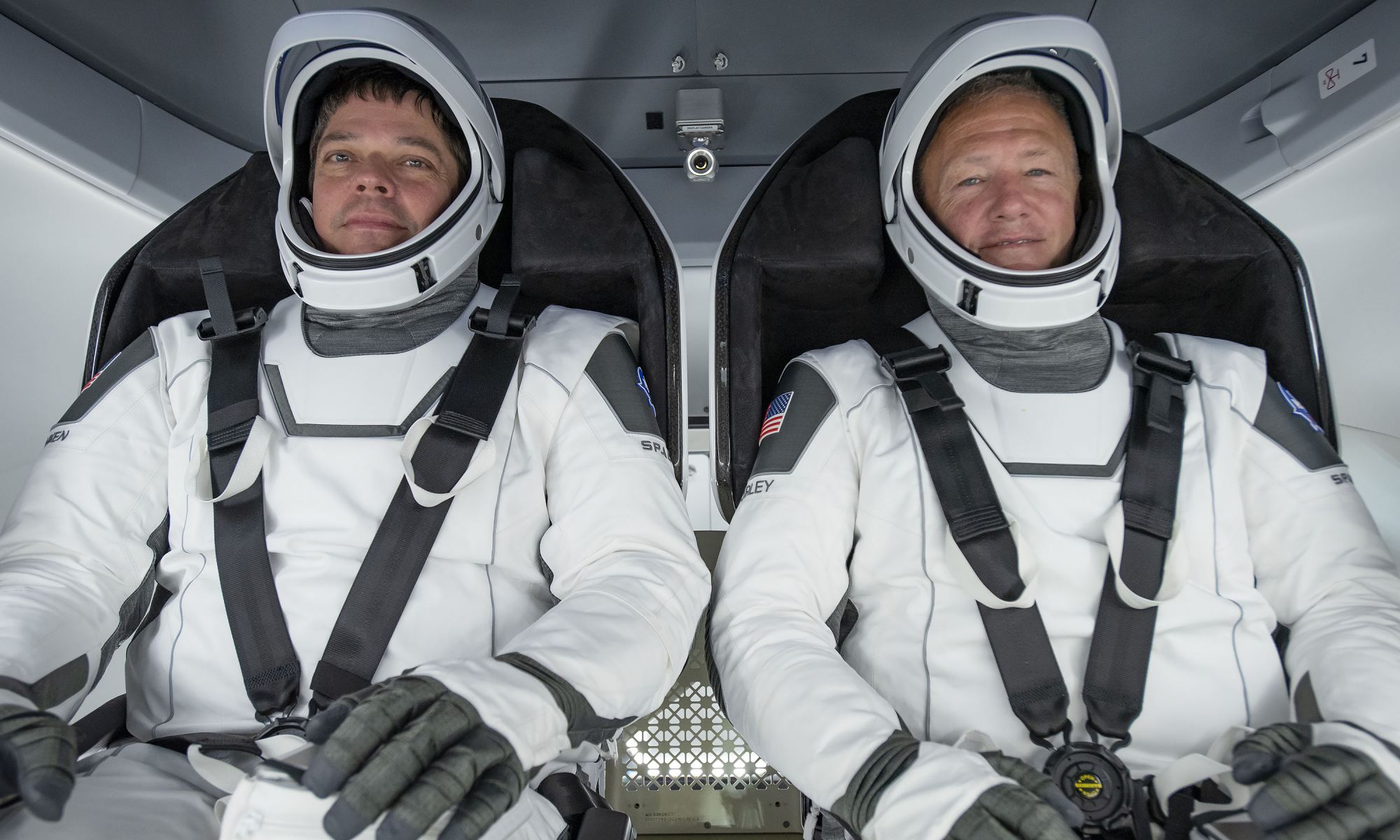
On May 30th, SpaceX and NASA made history when a Crew Dragon spacecraft carrying two astronauts (Robert Behnken and Douglas Hurley) launched atop a Falcon 9 rocket and rendezvoused with the International Space Station (ISS). With this one flight, NASA and SpaceX demonstrated that the US once again has domestic launch capability, something they have not enjoyed since the retirement of the Space Shuttle in 2011.
In one week, Sunday, August 2nd, Robert and Douglas will be returning to Earth using the same Crew Dragon spacecraft (named Endeavour) that took them to the ISS. This is the most crucial part of Demo-2 flight, where the spacecraft is tasked with bringing the astronauts home, safe and sound. As you can imagine, there are a lot of people who are understandably nervous, not the least of which is SpaceX founder Elon Musk.
Continue reading “Astronauts Come Back to Earth on August 2nd, Completing the Full Crew Dragon Test”NASA Changes its Mind. It Will be Using Previously Flown Crew Dragons and Falcon 9
For the purpose of restoring domestic launch capability to US soil, NASA launched the Commercial Crew Program (CCP) in 2010. Alongside its commercial partners, Boeing and SpaceX, the focus of this program has been to develop crew-capable spacecraft that could deliver payloads and astronauts to the International Space Station (ISS), something NASA has been unable to do since the retirement of the Space Shuttle in 2011.
On May 30th, 2020, the CCP fulfilled its purpose as SpaceX’s Crew Dragon spacecraft was launched atop a Falcon 9 rocket and successfully delivered two astronauts (Robert Behnken and Douglas Hurley) to the ISS. Looking ahead, NASA and SpaceX have modified their contract agreement, which gives the company permission to use previously-flown Crew Dragon spacecraft and Falcon 9 boosters to send NASA astronauts to the ISS.
Continue reading “NASA Changes its Mind. It Will be Using Previously Flown Crew Dragons and Falcon 9”How to Make the Food and Water Mars-Bound Astronauts Will Need for Their Mission
If we ever intend to send crewed missions to deep-space locations, then we need to come up with solutions for how to keep the crews supplied. For astronauts aboard the International Space Station (ISS), who regularly receive resupply missions from Earth, this is not an issue. But for missions traveling to destinations like Mars and beyond, self-sufficiency is the name of the game!
This is the idea behind projects like BIOWYSE and TIME SCALE, which are being developed by the Centre for Interdisciplinary Research in Space (CIRiS) in Norway. These two systems are all about providing astronauts with a sustainable and renewable supply of drinking water and plant food. In so doing, they address two of the most important needs of humans performing long-duration missions that will take them far from home.
Continue reading “How to Make the Food and Water Mars-Bound Astronauts Will Need for Their Mission”NASA tells Boeing to Make 61 Corrective Actions to Starliner Before the Program can Continue
With the retirement of the Space Shuttle in 2011, NASA has become dependent on its Russian counterparts to send and return astronauts to the International Space Station (ISS). Hoping to restore domestic launch capability to American soil, NASA has contracted with aerospace developers like SpaceX and Boeing to develop crew-capable spacecraft, as part of their Commercial Crew Program (CCP).
After years of development, Boeing managed to get their CST-100 Starliner ready for its first uncrewed test flight on December 20th, 2019. Unfortunately, a hiccup occurred during the mission that prevented the spacecraft docking with the ISS. After an independent review of the mission, NASA and Boeing have determined that 61 corrective actions need to be taken before the Starliner can fly again.
Continue reading “NASA tells Boeing to Make 61 Corrective Actions to Starliner Before the Program can Continue”


